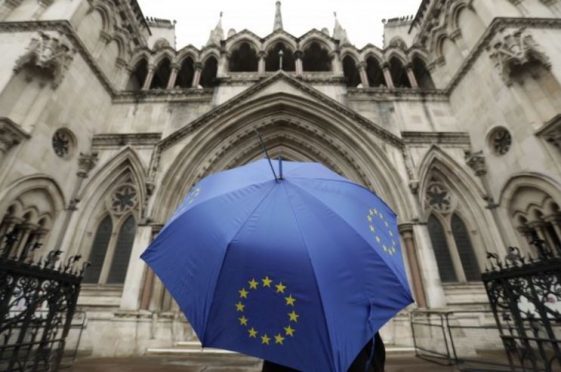The Supreme Court gave its historic ruling today on who has the power to invoke the UK’s withdrawal from the EU.
What did the UK’s highest court decide?
The justices ruled, by a majority of eight to three, that Prime Minister Theresa May cannot lawfully bypass MPs and peers by using the royal prerogative to trigger Article 50 of the Lisbon Treaty to start the two-year process of negotiating the UK’s divorce from its EU partners.
Which justices dismissed the Government’s appeal, and who allowed it?

Lord Neuberger, Lady Hale, Lord Mance, Lord Kerr, Lord Clarke, Lord Wilson, Lord Sumption and Lord Hodge rejected the Government’s case, while Lord Reed, Lord Carnwath and Lord Hughes dissented.
What did Supreme Court President Lord Neuberger announce?
He declared: “By a majority of eight to three, the Supreme Court today rules that the Government cannot trigger Article 50 without an Act of Parliament authorising it to do so.”
What is Article 50?
It is the formal mechanism which a nation state must trigger if it wishes to leave the European Union.
What does Article 50 say?
“A Member State which decides to withdraw shall notify the European Council of its intention. In the light of the guidelines provided by the European Council, the Union shall negotiate and conclude an agreement with that State, setting out the arrangements for its withdrawal, taking account of the framework for its future relationship with the Union.
“That agreement shall be negotiated in accordance with Article 218(3) of the Treaty on the Functioning of the European Union. It shall be concluded on behalf of the Union by the Council, acting by a qualified majority, after obtaining the consent of the European Parliament.
“The Treaties shall cease to apply to the State in question from the date of entry into force of the withdrawal agreement or, failing that, two years after the notification referred to in paragraph 2, unless the European Council, in agreement with the Member State concerned, unanimously decides to extend this period.”
Why did the Supreme Court rule on this?
Because the Government appealed against a High Court ruling in November which blocked Mrs May using the royal prerogative to launch Britain’s exit from the EU without Parliament having a say.
What happens now that the justices have upheld the earlier decision?
Parliament will debate and vote on invoking the measure.
Was the result of the June referendum binding on Parliament?
No. It was a consultative plebiscite, though few people on either side mentioned that at the time.
